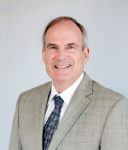
Rick Roche, CAIA, of Little Harbor Advisors, entertained a full house as he presented an overview of Artificial Intelligence and Machine Learning in the Investment Management Industry. The audience was diverse, ranging from industry veterans to a Senior in High School (I must admit that I wasn’t as forward-thinking at his age). For Mr. Roche this was a homecoming of sorts, having lived in Linden Hills for 22 years before moving to Boston last year.
Though Artificial Intelligence and Machine Learning is complex and often begs to be gone through with fine detail Rick presented a view that was “a couple feet deep and a mile wide” – for the 43rd time in the last 13 months we were told. The hour ranged from 1) a history lesson of Machine Learning to 2) the fascinating amount of data and capabilities currently available and 3) some thought provoking views of the disruption that may (will?) be caused by the uprising of the machines and those who run them.
Mr. Roche parroted Gary Kasparov in his book “Deep Thinking”, where he reflected upon losing to IBM’s “Deep Blue”, blaming it on “Losing emotional control … and never getting it back” — for those in the investment industry this emotional control may strike close to home. That the Wealth Management industry is a laggard when it comes to the adoption of the advanced techniques (as reported by PricewaterhouseCoopers) is odd as it has two of the key ingredients necessary to foster the revolution, high margins and emotional participants. A quick poll of the audience seemed to support this idea that the industry lags behind as only about a quarter of those present had some exposure to machine learning with most of these having only done some light reading on the topic.
As a CFA charterholder, and someone who is not looking to be displaced by a robot in 10 years, some of the more riveting aspects of the presentation focused on the world around me, including:
- Algorithms developed through Machine Learning techniques account for more than 98% of the trades happening on Wall Street and have sped up to the rate where 40,000 trades can now execute in the time it takes to blink our eyes.
- By 2025, 163 Zettabytes of digital data will be available (roughly equivalent to the storage capacity of 635 billion of the top of the line iPhones) — to put this in comparison it is estimated that the totality of human speech in all of history would cover 42 Zettabytes (if digitized as 16 kHz 16-bit audio).
- Algorithms have been developed to understand how much fuel is being transported based on reviewing satellite images to see how low tankers sit in the water.
- The keywords of “Data Scientist” are bigger than “Quant Analyst” and “Fundamental Analyst” on Indeed by a factor of three, and growing
- More than half of the people surveyed would consider becoming a client of Google, Apple, Facebook or Amazon if they were to offer wealth management services — and this number increases if you were to ask Millennials and those with over $20MM net worth.
- Alibaba has the World’s Largest money market fund
In the words of the legendary investor, Paul Tudor Jones, “No man is better than a machine. And no machine is better than a human with a machine”. In the words of another legendary investor, BlackRock co-founder Robert Kapito, “Apple was not in music industry, Google was not in mobile phones, and Amazon was not in groceries — until they were”. Mr. Roche’s presentation highlighted the risks for those who are not willing or able to transform and inspired those who are willing and able to become, what he called, a Computerized Financial Analyst.
That we came together on Halloween and enjoyed a Thanksgiving feast may be a bit of a foreshadowing that blending two seemingly foreign concepts, humans and computers, can work if you sent apart your preconceptions and embrace it.
For those who were unable to come to the event, and for those who would like to see it a second time, please watch the video through the link below. For those who are interested in the topics of programming, machine learning, artificial intelligence, etc. please send an e-mail to the Society (events@cfamn.org).
View the session video here:
https://penxy.com/widget/?e=xelol
-Tom Crandall, CFA
Articles Referenced:
Asset Management Firms are Laggards in ML Adoption
Asset & Wealth Management Revolution: Embracing Exponential Change






 Tell me a little about yourself.
Tell me a little about yourself.